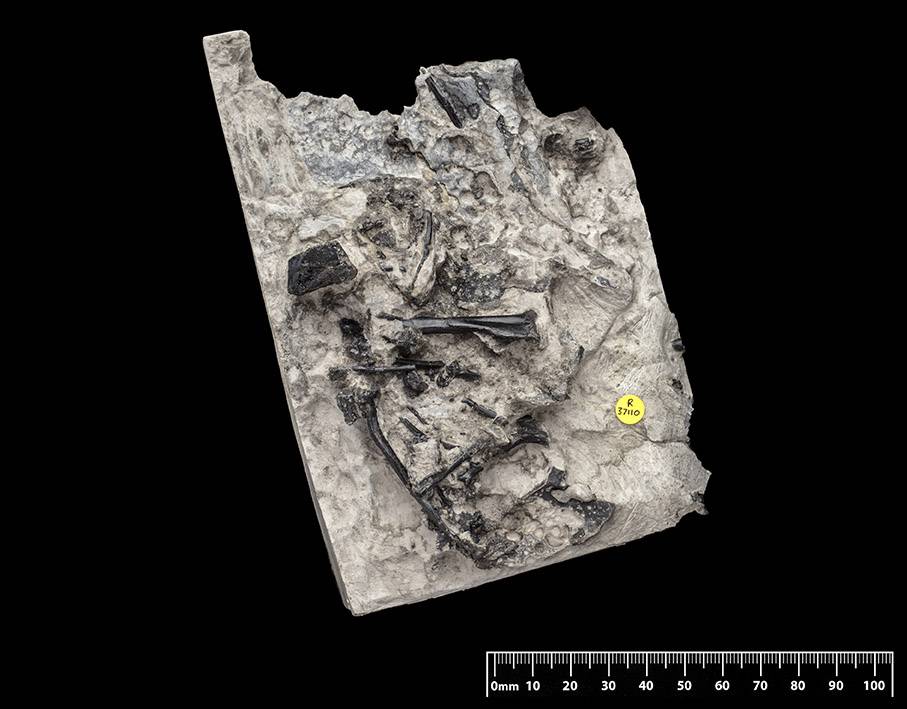Scientists from the Natural History Museum (United Kingdom) and the English universities of Bristol, Leicester and Liverpool describe in the magazine Journal of vertebrate paleontology fossils found in Scotland of a new one pterosaur which is part of the Darwinoptera group or clade. It is about a partial skeleton of a single individualincluding parts of the animal’s shoulders, wings, legs and spine.
Their discovery shows that their clade was significantly more diverse than previously thought, and persisted for more than 25 million years, from the late 20th century. Jura asked till the Late Juratogether with the birds, the dinosaurs which eventually evolved into modern birds. During this period, several species spread throughout the world.
“This makes the model of early evolution pterosaurs be more complex than previously thought. This has proven to be the case with this group so-called transitional forms and that has evolved over millions of years. This means that there were transitional forms, both earlier, more basic, and later, more advanced. This transitional group would be a sister group to the more advanced pterodactyloids,” he points out. Liz Martin Silverstoneco-author of the study and paleobiologist at the University of Bristol.



Rare and incomplete pterosaur fossils
The rarity of fossils pterosaurs of the Middle Jurassic and its incompleteness has hampered previous attempts to understand the early evolution of these winged reptiles. In this case, many of the bones remain completely embedded in the rock and could only be studied using computed tomography.
“The biggest problem is that the fossils were very fragile and the rock in which they were embedded was extremely dense, making it very difficult to prepare it to better view the remains. That’s why we decided to scan the copies. However, this also caused problems because the density was such that it was difficult for the X-rays to penetrate the rock. Many hours of physical and digital preparation were needed to recognize it and see what was there,” the scientist emphasizes.
They called it Ceoptera evansae: Ceoptera from the Scottish Gaelic word Cheò, meaning mist (a reference to the common Gaelic name for the Isle of Skye or Isle of Mist), and from Latin pterameaning wing. Evansae honor the teacher Susan E. Evansfor his years of anatomical and paleontological research, especially on this island.
Paul Barrettresearcher emeritus at the Natural History Museum and lead author of the paper, says: «Ceoptera It helps shorten the time of several key events in the evolution of flying reptiles. Its appearance in the Middle Jurassic of Britain has since been a complete surprise most of his close relatives are from China. “This shows that the advanced group of flying reptiles to which it belongs appeared earlier than we thought and quickly acquired a nearly global distribution.” In addition to these remains and those from China, two other fossils have been found in England (of a skull) and in Argentina.
The birds survived, but the pterosaurs did not
The scientific community doesn’t know exactly why pterosaurs extinct and the birds, which lived before the end of the century Chalk and lived with them, they did not do it. What is known from previous studies is that large animals fought at the end of the Cretaceous period, when the meteorite impact occurred, and that these large reptiles were mainly alive at that time.
‘There must have been something different in the physiology of the two species of flying animals, which meant that although the birds were able to survive the extinction event, the pterosaurs No,” says Martin-Silverstone.
He Middle Jurassic It is the time when pterosaurs undergo a transition from the previous forms of small-tailed species, such as Rhamphorhynchus j Dimorphodonthat of short tail and large body who dominated the sky, like Pteranodon j Quetzalcoatlus. Until now, it is not known how this transition occurred, so every specimen from this era helps fill that gap and understand the evolution of these animals.
«The period from which it comes Ceoptera It is one of the most important in pterosaur evolution, and of which we also have some of the smallest specimens. Discovered that there were more bones embedded in the rock, some of which played an important role in identifying what type it is Ceoptera, made this an even better find than initially thought. It brings us one step closer to understanding where and when they evolved loose pterosaurs more advanced,” concludes the scientist from the University of Bristol.

